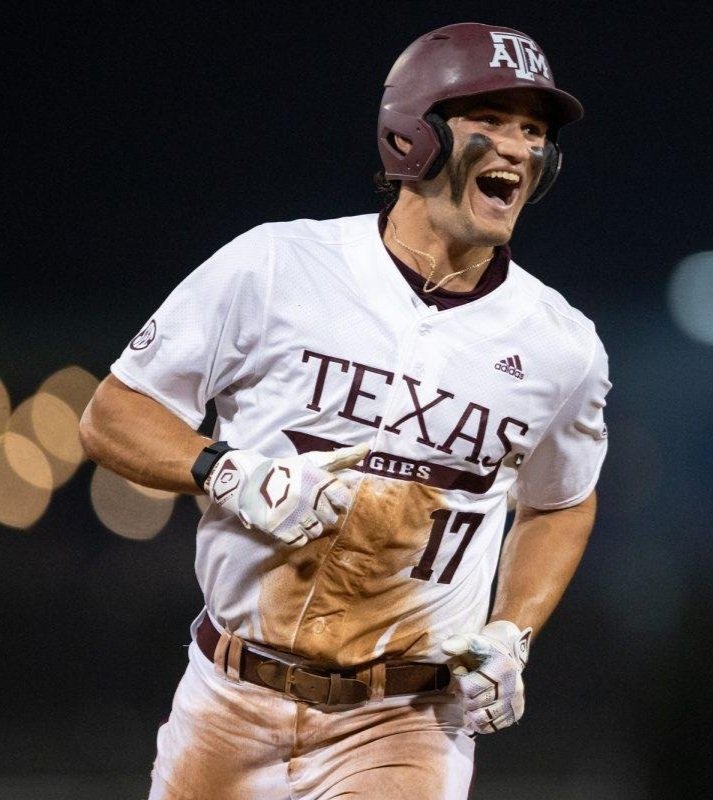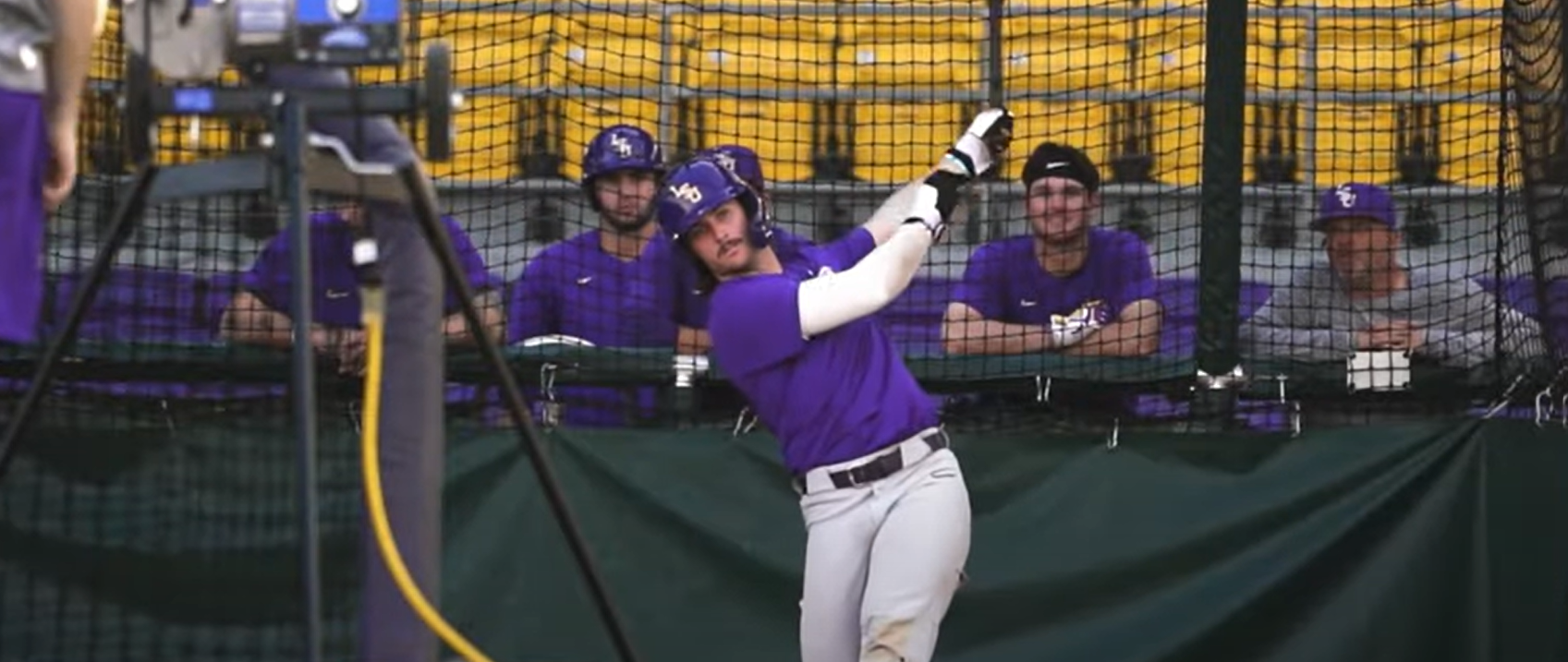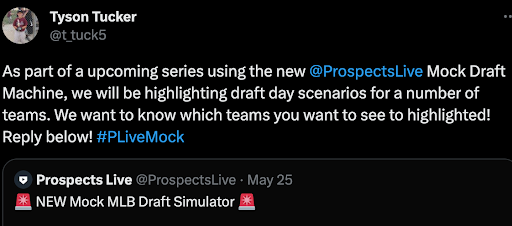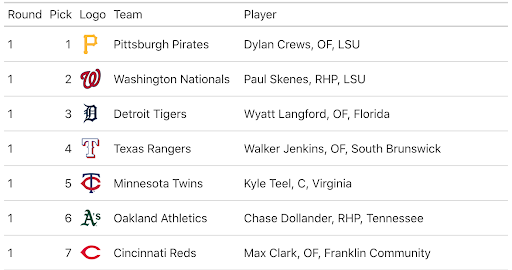2025 MLB Draft Top 75 Collegiate Prospects: Conference Breakdowns (Mid-Majors/Independents)
Tyler Jennings has been crushing it with the 2025 MLB Draft boards and recently released his top 75 college prospects. Over the next few weeks, we will bring you some top prospects within each conference. For this edition, we will dive into some of the top mid-major prospects across the NCAA.
You can dive into our full Top 75 Collegiate Prospects for the 2025 MLB Draft list here: https://www.prospectslive.com/prospects-live/2024/9/21/2025-mlb-draft-top-75-collegiate-prospects
HITTERS
SS Aiva Arquette - Oregon State
Prospects Live Ranking: #7
Arquette, a standout from Saint Louis High School and a rising star in college baseball, has captured the attention of scouts for his performance at the University of Washington and in the Cape Cod League. He’s been a massive get for Oregon State in this years transfer portal. He has been one of the biggest risers in the college ranks. Arquette is a huge physical presence at shortstop at 6’4, 220lbs adding another name to the “tall shortstops” category. Given his size and stature, he could move to third base in the future as he gains more physicality. His offensive game saw major strides in his sophomore season, showcasing a balanced approach, impressive exit velocities, and the ability to hit to all fields. He’s got imense raw power, especially to the opposite field, but his patience at the plate needs some more development as he can get a tad aggressive. Regardless, there are a ton of tools to dream on and a solid season at Oregon State will likely have his name being called super early in the 2025 MLB Draft.
C Caden Bodine - Coastal Carolina
Prospects Live Ranking: #12
Bodine is one of the most impressive bats at the plate due to his ability to get barrels easily, and he does it at an excellent level from both sides. He ran up some absurd contact rates and had a good feel for the strikezone. He can get overly aggressive sometimes, but he does a good job keeping that mostly in check. Bodine has started to tap into more power but has maxed out at 11 home runs in his freshman year. He struggled in a small sample size in the Cape Cod League this summer, but he was limited to six games, given he also spent some time with the USA Collegiate National Teams. Defensively, Bodine has all the tools to stick behind the plate. He’s a force behind the plate as he does a good job keeping the ball in front of him and has a decent arm to throw guys out. There is a lot to like here for teams looking at him in the 2025 MLB Draft, and another strong season should keep him high on draft boards.
3B Trent Caraway - Oregon State
Prospects Live Ranking: #18
As you can see, Oregon State is chock-full of offensive studs in their lineup in 2025, just like they were in 2024. Trent Caraway is an athletic and versatile infielder who stands out for his strong defensive instincts and reliable glove work, particularly at shortstop and third base. He has solid arm stroength and thinks he should be able to handle the hot corner long-term in the future. Offensively, power is the name of the game for Caraway. He hits the ball HARD! He’s already maxed out at 113.1 mph with his exit velos. He has shown developing power potential but can be quite aggressive at times and is working on making more consistent contact. He’s shown some swing-and-miss and hits the ground on the ball too much, but he has improved his approach some recently. He has a decent amount of speed on the base paths and is far from a clog out there. His maturity and baseball IQ set him apart as a player with high upside and a promising future.
OF Nick Dumesnil - Cal Baptist
Prospects Live Ranking: #20
Dumesnil really popped off as one of the best mid-major bat prospects in the entire nations after his sophomore season at Cal Baptist. The outfielder slashed an absurd .362/.440/.702 with a 1.142 OPS, including 19 2B, 19 HR, and 45 RBI. While he had some solid production he can be pretty aggressive at the plate. Dumesnil excels at punishing fastballs but can struggle with spin, leading to higher ground ball rates on breaking pitches. His speed and strong defensive instincts make him a versatile outfielder, with center field being his most likely position. After impressing in the WAC and continuing his success on the Cape, he’s now a legitimate Day 1 prospect with first-round potential. His power, speed, and defensive ability give him a robust toolset, though cutting down on his aggressiveness at the plate will be key as he faces tougher pitching.
OF Gavin Turley - Oregon State
Prospects Live Ranking: #22
ATHLETE! That sums up the skillset Turley brings to the table. There is a lot to like with his toolset across the board. He’s got a ton of bat speed that generates a massive amount of raw power. Turley’s weakness has always been his ability to make contact, but he showed a new approach in the Cape Cod League over the summer that led to much success. He cut down on his whiff and did a good job of laying off struff out of the zone. It was pretty impressive to see how quickly the new approach worked, and I’ll be curious to know if he can carry that success into the 2025 season. Defensively, Turley’s athleticism plays well in the outfield. Thanks to his speed, he gets good jumps and reads and can track almost anything down. He has a plus arm, and his throws have a ton of carry and accuracy. The key for Turley is going to be to continue refining his approach and cutting back on the swing-and-miss. If he can do that, there is a good chance he could see his name called early on day one.
3B Triston “Murf” Gray - Fresno State
Prospects Live Ranking: #34
Coming in at 6’4, 220lbs, Murf Gray is a DUDE physically as he is built like a horse. The 2023 Mountain West Player of the Year earned this accolade because of his performance at the plate where he slashed .296/.358/.504 with 12 2B, 10 HR, and 52 RBI. He continued to produce at the plate this summer in the Cape Cod League against some of the better competition in the US. The power and contact skills combine make him an absolute threat at the plate. He couples excellent contact rates with solid exit velos thanks to his above-average bat speed, strength, and feel for the strike zone. Gray will eat up any fastball that comes his way, but can struggle with spin from time-to-time. He handles the hot corner pretty well and has a strong arm that helps him stick there. As of now, he will likely stick at third base, but there could be a possibility that he moves to the outfield in the future. Gray has day-one draft potential with his offensive upside if he refines his hit tool and maintains his value in other areas of the game.
C Brooks Bryan - Troy
Prospects Live Ranking: #47
Bryan is an absolute force at the plate. Bryan broke the RBI record at Troy with 85, which ranked fifth in the entire NCAA. He is one of the most powerful bats in the 2025 class as he combines explosive bat speed with plus raw power, especially from the left side. He posted significantly good exit velos his entire sophomore season as well. Bryan has some swing-and-miss to his game, but he does offset with a solid, disciplined approach at the plate. Behind the plate, he's a strong athlete with solid blocking skills and average arm strength, though he still needs to refine his framing and throwing out baserunners. Despite these areas for improvement, Bryan’s mix of power and athleticism make him a solid long-term catcher prospect.
OF Dallas Macias - Oregon State
Prospects Live Ranking: #55
Macias has transformed his profile since arriving at Oregon State, adding significant strength and bat speed to go along with his already impressive hit tool. Initially seen as more of a table-setter, he now boasts solid average raw power, especially from the left side, though his swing is more adjustable from the right. While Macias excels at making contact, his quality of contact against off-speed pitches, particularly from the left side, remains inconsistent, though he handles fastballs with ease. As a switch-hitter, he showcases versatility at the plate with an 86% contact rate and a chase rate below 25% during his time on the Cape. Defensively, Macias has experience across all outfield spots and has even played second and third base in spurts, but his average speed and arm strength suggest a future in left field. With his improved power and consistent contact ability, Macias is shaping up as a potential day-one pick in the 2025 draft.
1B/3B Michael Dattalo - Dallas Baptist
Prospects Live Ranking: #67
After a standout freshman season at Northwestern State, Dattalo transferred to Dallas Baptist and continued to showcase his offensive prowess, slashing .345/.395/.517 with eight home runs. His power and bat speed are undeniable, with aggressive swings producing high exit velocities, sometimes reaching 110 MPH. Though Dattalo occasionally expands the zone on breaking balls, his mature approach and ability to consistently make contact—evident in his 84% contact rate on the Cape—set him apart as one of the more promising hitters in his class. While primarily a third baseman, his defense can be inconsistent at times, and he’s also seen time at first base, where his athleticism and footwork face less of a challenge. Despite the defensive polish needed at the hot corner, Dattalo’s bat-first profile, with a mix of raw power and excellent barrel control, has firmly placed him on the radar as a prospect with considerable upside.
PITCHERS
RHP Tyler Bremner - UC Santa Barbara
Prospects Live Ranking: #3
After a solid sophomore year and an impressive showing at USA Collegiate National Taem, Bremner has skyrocketed to the top of list for pitching prospects in the 2025 MLB Draft. It’s been a contest between him and Jamie Arnold, but Bremner has set himself apart thus far. The stuff is electric. He’s got a mid-90s fastball that has topped 98 mph, which our Tyler Jennings caught at USA Collegiate this summer. The pitch has a ton of carry up in the zone and gets on batters quick. The changeup is his best pitch. It is a double-plus pitch with high spin rates and plays exceptionally well off his fastball. He’s also got a slider that has made many improvements since his freshman year and now has become a filthy third offering. Bremner has the makings of a solid three-pitch mix that are all above-average to plus offerings. It’s clear to most everyone why he might be the first arm off the board in the 2025 MLB Draft, especially if he has a solid junior season.
RHP Justin Ellwanger - Dallas Baptist
Prospects Live Ranking: #29
Dallas Baptist always seems to be loaded with talent on the mound. Ellwanger was draft-eligible in 2023 and was selected by the Washington Nationals in the 19th round. He didn’t sign and made his way back to Dallas Baptist. Ellwanger followed his draft selection by absolutely dominating hitters in the box in the Cape Cod League where he struck out 22 batters in 13 innings to the tune of a 2.77 ERA. He’s got some electric stuff on the mound, led by his fastball, which touched 99 mph and sits in the mid-90s. He’s constantly missing bats with it. He pairs it with a mid-80s slider and low-80s curveball. He does better at throwing his slider for a strike than his fastball. He lacks chase with his curveball, but the pitch has some good depth to it.
LHP Grant Richardson - Grand Canyon
Prospects Live Ranking: #73
As a fellow Arizonan, I always love seeing Grand Canyon guys on this last. GCU has been a sneaky good baseball program for years now. Richardson provides them with another intriguing prospect for the MLB Draft to continue the guys they’ve been able to produce in the past. Richardson underwent elbow surgery in July after transitioning into the rotation for the Lopes. The lefty is a physical presence on the mound coming in at 6’3, 220lbs. He’s got a solid fastball that sits in the mid-90s (92-95), but has been up to 97 mph. He isn’t afraid to work the pitch up in the zone on batters. He’s got a sharp slider with plenty of bite that he pairs with his fastball as it averages 85-87 mph and has been up to 89 mph. He’s flashed a changeup from time-to-time but the pitch is very inconsistent and still a work in progress. Command has always been a struggle for Richardson, but there is enough there for him to become a potential reliever. If he can polish his secondaries and hone some of his command issues, there could be a potential starter.















































